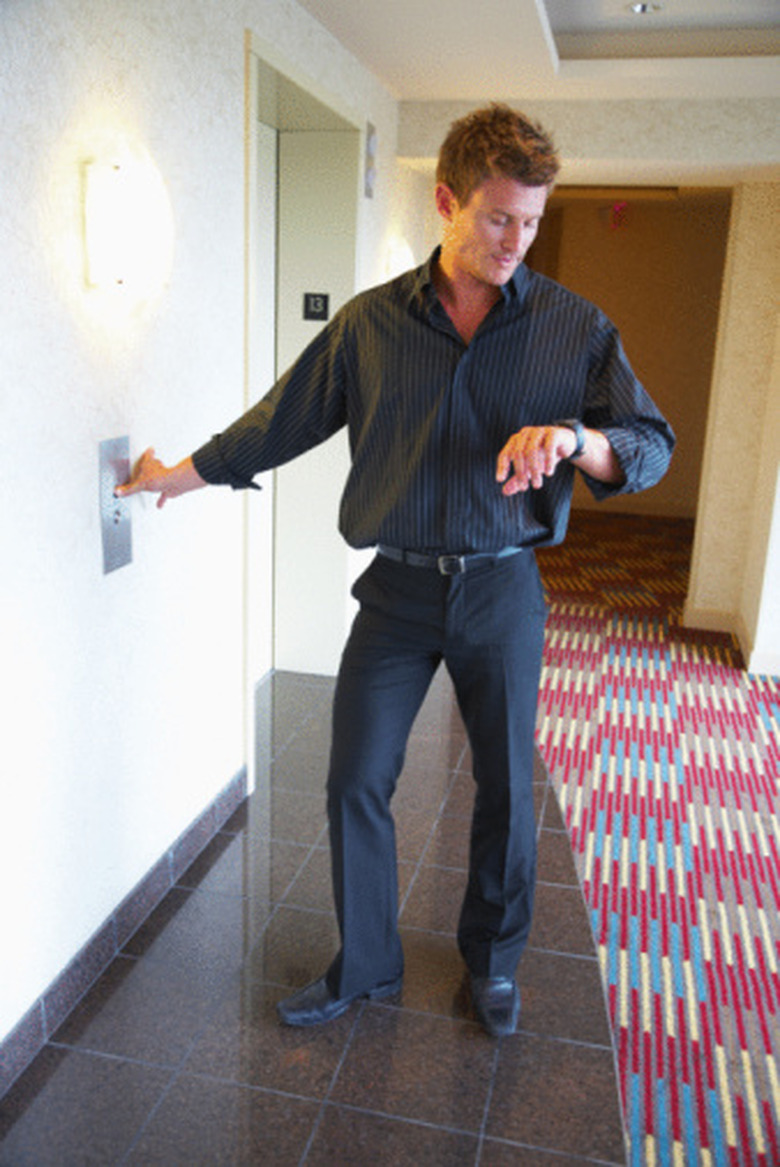How To Calculate The Speed Of An Elevator
Elevators don't travel at the same rate during their trips because they have to accelerate to full speed initially then decelerate at the end. You can estimate the average velocity, however, if you know how far the elevator has to travel and how long it takes to traverse that distance. Typically, you can't actually go inside the building and measure the height of each floor — it wouldn't be practical to do so.
Step 1
Count the number of stories in the building and subtract one, since the bottom of the elevator will travel all the way to the bottom of the top floor. Enter the number of stories into the building height calculator at the Council on Tall Buildings and Urban Habitat website. This will give you an approximate height. Please keep in mind that this number is certainly not exact, but it will suffice to get a rough idea of the elevator's speed.
Step 2
Take the elevator all the way to the top floor of the building. On the way, time how long it takes to reach the top using your stopwatch. Remember to start your stopwatch once the elevator starts to move, not when the doors close, and stop your stopwatch once the elevator stops moving, not once the doors open.
Step 3
Divide the height you calculated by the time it took the elevator to travel the distance, and you'll have a rough estimate of the speed of your elevator.
Things Needed
- Pencil
- Paper
- Calculator
- Stopwatch
TL;DR (Too Long; Didn't Read)
The number you have calculated is only an estimate and should not be treated as a precise figure.
Cite This Article
MLA
Brennan, John. "How To Calculate The Speed Of An Elevator" sciencing.com, https://www.sciencing.com/calculate-speed-elevator-8246916/. 24 April 2017.
APA
Brennan, John. (2017, April 24). How To Calculate The Speed Of An Elevator. sciencing.com. Retrieved from https://www.sciencing.com/calculate-speed-elevator-8246916/
Chicago
Brennan, John. How To Calculate The Speed Of An Elevator last modified March 24, 2022. https://www.sciencing.com/calculate-speed-elevator-8246916/
